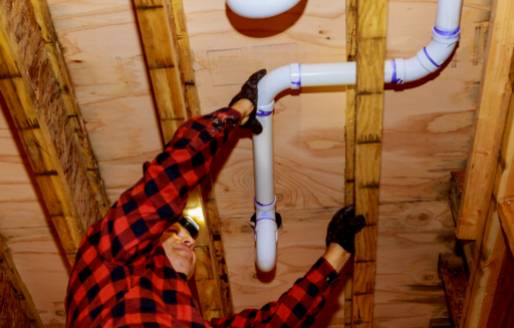As a homeowner, finding sustainable and cost-effective solutions for your water supply is becoming increasingly important. One such solution that is gaining popularity is the implementation of a rainwater harvesting system. Not only does this system offer a way to conserve water, but it also provides a range of environmental benefits. In this article, we will explore the various reasons why you should consider incorporating a rainwater harvesting system into your modern home.

Environmental Benefits of Rainwater Harvesting
Rainwater harvesting offers several environmental benefits that make it a sustainable and eco-friendly water supply solution. By capturing and utilizing rainwater, homeowners can reduce their reliance on traditional water sources, such as municipal supplies or groundwater. This helps to conserve these valuable resources and reduce the strain on public water infrastructure. Additionally, rainwater harvesting can help to mitigate stormwater runoff, which can contribute to pollution and erosion in natural waterways. Overall, rainwater harvesting can significantly reduce the environmental impact of water use in the modern home.
Cost-Effective Water Supply Solution
Rainwater harvesting is a cost-effective water supply solution that can significantly reduce water bills and overall water usage. By collecting rainwater, homeowners can supplement their water supply for a variety of non-potable uses such as watering the garden, flushing toilets, and washing clothes. This can lead to substantial savings on utility costs and reduce the demand for municipal water sources. Additionally, rainwater harvesting systems require minimal ongoing costs once installed, making them a sustainable and economical choice for homeowners looking to reduce their environmental impact and save money.
Applications and Uses for Harvested Rainwater
Rainwater harvesting systems can be used for a variety of applications and can serve as a sustainable and cost-effective water supply solution for modern homes. Harvested rainwater can be used for irrigation, landscaping, and gardening, reducing the need for traditional water sources and lowering water bills. Additionally, rainwater can be treated for non-potable uses such as flushing toilets, washing clothes, and even for showering. By using harvested rainwater for these applications, homeowners can reduce their reliance on municipal water sources while also reducing their environmental impact.
Understanding the Components of a Rainwater Harvesting System
The primary components include a catchment area, conveyance system, storage tank, filtration system, and distribution system. The catchment area, typically the roof of a building, collects rainwater and directs it to a conveyance system, which is often a gutter and downspout. The rainwater is then transported to a storage tank where it is stored for future use. Before being used, the rainwater is filtered to remove debris and contaminants, and then it is distributed for various applications. Understanding the various components of a rainwater harvesting system is essential for implementing an effective and efficient system for capturing and utilizing rainwater.
Installation and Maintenance Considerations for Rainwater Harvesting
Installing a rainwater harvesting system requires careful planning and consideration of various factors. First, a suitable location for the collection tanks and gutters must be selected to ensure efficient water capture. The size and number of tanks will depend on the amount of rainfall in the area and the intended use of the harvested water.
Proper filtration and storage systems must be installed to ensure the collected water is safe for use. This may include sand filters, first flush diverters, and UV sterilization units to remove debris and any potential contaminants. Regular maintenance of these components is essential to ensure the system continues to function effectively.
Additionally, the plumbing and distribution system for the harvested water must be carefully designed and installed to prevent cross-contamination with the main water supply. Proper labeling and signage should also be used to distinguish between the harvested water and the potable water supply.
It is important to consider the local climate and weather patterns when installing a rainwater harvesting system. Proper protection from freezing temperatures and extreme weather events must be incorporated into the design to prevent damage to the system.
Regular maintenance of the system is vital to ensure optimal performance. This includes periodic cleaning of the gutters and filters, inspection of the storage tanks for leaks or damage, and monitoring of water quality. It is also important to check for any potential breeding grounds for mosquitoes to prevent the spread of disease.
Overall, the installation and maintenance of a rainwater harvesting system requires careful planning, attention to detail, and regular upkeep to ensure a sustainable and cost-effective water supply for the modern home.
Regulatory Framework and Incentives for Rainwater Collection Systems
As such, many local and state governments have implemented regulatory frameworks and incentives to promote the installation of rainwater collection systems.
One of the key regulatory aspects of rainwater harvesting is obtaining necessary permits and approvals for the installation of collection systems. This ensures that the system is implemented in a safe and compliant manner, taking into account local building codes and environmental regulations. Additionally, some jurisdictions require the registration of rainwater systems to monitor their use and impact on the local water supply.
Incentives for rainwater collection systems may come in the form of rebates, tax credits, or other financial incentives to offset the initial costs of system installation. These incentives aim to encourage homeowners and businesses to invest in sustainable water management practices and reduce their reliance on traditional water sources. In some cases, there may also be grants available for implementing rainwater harvesting projects, particularly for larger-scale applications in commercial or public buildings.
Furthermore, some regions offer regulatory exemptions or streamlined permitting processes for rainwater harvesting systems to promote their adoption. This can help to reduce the bureaucratic barriers associated with installing these systems, making it easier for individuals and organizations to embrace sustainable water practices.
Overall, the implementation of regulatory frameworks and incentives for rainwater collection systems plays a crucial role in promoting the widespread adoption of this environmentally friendly practice. By providing support in the form of financial incentives and streamlined regulatory processes, governments can encourage the use of rainwater harvesting as a cost-effective and sustainable water supply solution.
